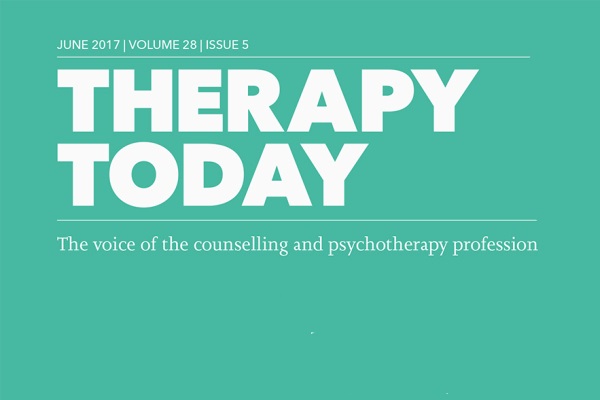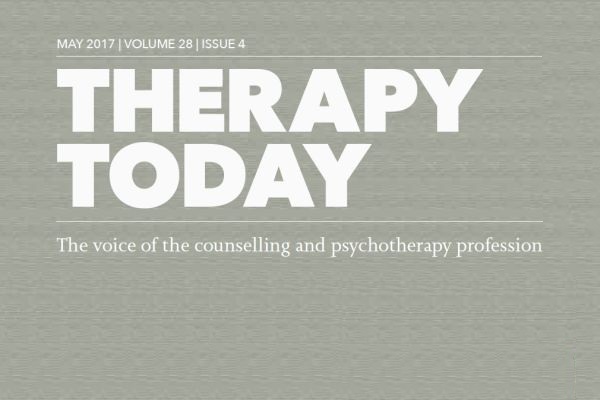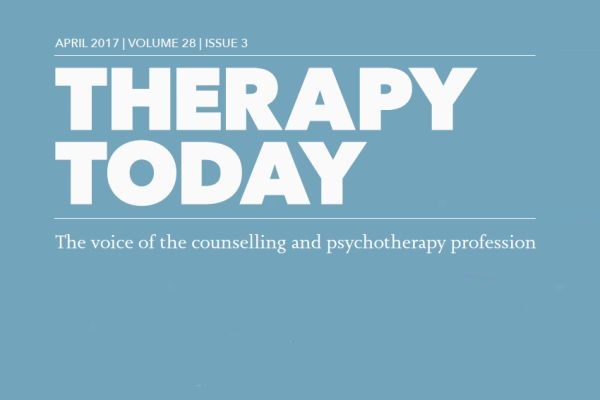2009 wasn’t noted for its positives. Unemployment hit a high not seen since 1995. The Government was forced to step in to rescue Lloyds Bank. The death toll among British soldiers in Afghanistan continued to rise inexorably. Panic about a swine flu epidemic swept the land. November was the wettest month since records began. In December, blizzards engulfed much of the country.
And, on 28 October, the National Institute for Health and Care Excellence (NICE) published its Clinical Guideline 90 (CG90) on the management and treatment of depression in adults. CG90 grudgingly (and only after energetic lobbying by BACP) declared that counselling was recommended as a treatment for mild-to-moderate, persistent depression, but only if all else had failed, and if clients were informed of the lack of supporting evidence when it was offered to them.
CG90 appeared to sound the death knell for access to counselling in the NHS, in England and Wales at least (where NICE guidelines apply). Nevertheless, counselling has successfully retained a robust presence as the second most frequently offered talking therapy in IAPT services, after CBT, and it is delivering outcomes that are at least equal to CBT.
Now, however, following a review of CG90, there are very real concerns that the revised guideline, due to be published for consultation this month, may exclude counselling, presumably on the same grounds of lack of evidence of effectiveness.
This is by no means certain; the publication of the consultation draft has already been delayed by a month, and it may have been revised, but, as Therapy Today went to press, this was a possibility.
What’s the evidence?
NICE guidelines are produced by a committee of experts from the field, based on reviews of the ‘best available evidence’ – reviews, meta-analyses and randomised controlled trials (RCTs) – on the various treatments. The problem for counselling in meeting the strictures of NICE’s guideline development process has always been twofold. First, definition: counselling is often defined in research as a control treatment, not an active intervention or therapy, and used as a catch-all for a wide array of different models of talking therapy, from psychotherapy through to ‘non-directive, supportive counselling’. Second, there is very little evidence of the kind and quality that NICE requires on counselling as it is practised here in the UK. RCTs are costly to run, funding is scarce, and they take time to complete.
In 2013, BACP put up the money through its Research Foundation for the PRaCTICED trial, an RCT led by Professor Michael Barkham at the University of Sheffield. This is comparing outcomes of clients randomly allocated to receive high-intensity CBT or Counselling for Depression (CfD) – the manualised form of person-centred/emotion-focused counselling developed specifically for delivery in IAPT – through the Sheffield IAPT service. Launched in 2014, the trial requires 550 people (225 for each intervention), and it won’t complete data collection until the spring of 2018 – too late for NICE.
Naomi Moller, BACP Joint Head of Research, says: ‘Part of the problem is how NICE defines counselling. CG90 compares counselling – which, if you look it up, just means psychological therapy in general – with sub-types of therapy: modalities, such as CBT or psychodynamic psychotherapy. This is not comparing like with like. And the other problem is the evidence hierarchies they use. RCTs are not the only way to seek to answer a question about what psychological therapies “work” in practice. NICE has a very particular way of thinking about evidence, but there are masses of data from IAPT – real data collected on real people – that shows counselling is effective. Apparently, this doesn’t count.
‘There is an assumption that RCTs – and meta-analyses of RCTs, which statistically combine the individual studies – represent some kind of scientific truth. Science in our area isn’t truth with a capital “T”; it’s always about how you interpret the research, and psychotherapy researchers can, and do, argue about what research findings mean. For example, is the research design any good? Is there sufficient “power” to suggest that the statistical findings are credible?’
Inadmissible data
Dr Pim Cuijpers, Professor of Clinical Psychology at Vrije University, Amsterdam, heads up a research programme that has been collecting and analysing RCT data on the comparative effectiveness of psychological treatments for depression for some 10 years. He and his team have published several large-scale meta-analyses of trial data, and have consistently found no significant difference in outcomes between counselling and CBT.1,2 His findings concur with Naomi Moller’s analysis: ‘Of 19 randomised trials comparing supportive therapy to a control condition, what they show is the effects of counselling in the short term are the same as CBT. Trials that compare different types of psychological therapy usually find counselling is a little less effective than other psychological therapies, but that is because counselling is often used as a control condition, and the researchers usually have allegiances towards the treatment with which they are comparing it. If you look at the trials in which there is no evidence of allegiance, counselling is as effective as CBT, certainly in the short term, between eight and 20 sessions. In one meta-analysis, we included 18 trials directly comparing counselling with CBT for adult depression and found no significant differential effect size, and that is without taking research allegiance into account.’
There is a huge bank of data collected by IAPT itself, from its own performance statistics. These data, however, are not accepted by NICE: the problem, reportedly, is that the diagnoses used are unreliable – they are the broad categorisations of clients’ presenting problems, made, in most cases, by IAPT psychological wellbeing practitioners.
BACP Senior Research Fellow Jo Pybis, with co-researchers David Saxon, Andy Hill and Michael Barkham, has very recently published a detailed analysis of data collected in the second National Audit of Psychological Therapies, in 2013.³ This gathered data from more than 33,000 patients across 103 IAPT services. The aim of the analysis was, in part, to compare outcomes from CBT and counselling. But mainly it sought to test out if variability between services in the quality of the therapy provided, not which model of therapy was offered, might be a more significant influence on client outcomes.
The analysis raises a number of interesting points. First, counsellors tended to have clients with more severe depression referred to them than were referred for high-intensity CBT. Second, there was no significant difference in outcomes between the two therapies: CBT only became significantly more effective at 18 sessions and over. But what made the biggest difference, says Jo Pybis, was variability between services. ‘Our results suggest that, if the 16 least effective sites had achieved outcomes similar to the average-scoring sites, some 1,000 more clients would have recovered in one year,’ she says. ‘It’s the variability that is the key finding for us. NICE pits one therapy against another, but our evidence is that there is very little difference between modalities; the key variability is between services. We need to be looking at what makes an effective service and an effective therapist, whether that’s training, supervision, or management structure, and that is what the NHS should be interested in too.’
The implications
If counselling is not recommended in the NICE guideline, there are likely to be major implications, Moller warns: ‘NICE guidelines are influential beyond the NHS and beyond England. The outcome will affect patient choice. It will affect jobs. And not just in IAPT services – other organisations, such as EAPs and third-sector counselling services, will also be affected.’
According to the most recent IAPT annual report from NHS Digital,4 in 2015–16, some 23% of clients completing a course of high-intensity therapy received counselling and 57% received CBT. The rest received ‘other high-intensity therapy’ (13.6%), or one of the other therapies offered more rarely by IAPT services, including eye movement desensitisation and reprocessing (EMDR), interpersonal psychotherapy (IPT), brief dynamic interpersonal psychotherapy (DIT) and couples therapy for depression.
The choices offered to clients vary widely across sites and clinical commissioning groups (CCGs). The Action for Choice in Psychological Therapies Group within NHS England, on which BACP sat, was charged with ensuring IAPT services were able to provide a balance of NICE-approved therapies to meet need. Worryingly, the group was disbanded abruptly last month, and its work has been added to the remit of the national IAPT Education and Training Expert Reference Group, which is not concerned with what is actually offered to clients out in the field.
Across all of IAPT, the largest number of high-intensity therapists (61%) are CBT practitioners. Counsellors trained in CfD account for six per cent, ‘other’ counsellors 11%, and the remainder are trainees, or qualified in a range of less commonly offered therapies.5
Recovery rates in 2015–16 were broadly comparable across all the therapies. For CBT, they were 49% for anxiety and 45.9% for depression; for counselling, they were 46.7% for anxiety, and 47.6% for depression. But recovery rates ranged from 21% to 64% by CCG area.4
This only goes to confirm the fabled ‘Dodo bird verdict’ – ‘all have won and all shall have prizes’: there is very little difference in outcomes by therapy type; the difference is in all the other factors that might be involved, including therapist alliance, therapist skill, and the client’s own presenting issues and circumstances.
Talk to people on the ground who are managing and delivering IAPT services, and they are very clear about the value of having counselling in the mix. Some people and some conditions respond much better to one model than another; what’s important is to be able to offer the choice.
If counselling fails the NICE test, that will leave just CBT on offer for the vast majority of NHS patients with anxiety and depression – in other words, no choice. There is evidence that being offered a choice and getting their preference improves client engagement with treatment and improves outcomes.6 Moreover, patient choice and satisfaction is a long-standing key principle in the Government’s health and social care strategy.
Vicki Palmer, Chief Executive Officer at Oasis-Talk, a third-sector IAPT provider in the south-west, has been promoting counselling in her region for the past five years. Her service recently completed a pilot trial in South Gloucestershire to test a new way of assessing clients. Referrals are given a 1.5-hour, intensive, face-to-face, combined assessment and therapy session delivered by a qualified therapist, rather than a psychological wellbeing practitioner on the phone. The results, she says, are exciting, because patients who received the longer assessment quite often didn’t need any further treatment, and, if they did, needed fewer sessions, making this higher-intensity initial input cost-effective.
‘Effectiveness is about getting the patient to the right treatment first time, whatever that treatment is,’ she says. ‘I don’t know how our commissioners would respond if the revised guideline didn’t recommend counselling. They are pro-counselling because we have worked with them for five years. Counselling is as highly regarded as CBT here. In our service, we recognise that different presentations and personalities need different approaches. If we didn’t offer counselling, we wouldn’t be serving our patients well. We need both.’
Lyndise Tarbuck works at Colchester Institute, where she supervisees trainees on the person-centred diploma and degree course in counselling studies and was an assessor on its CfD course. ‘I have delivered CfD in a very poor area in Essex, and many clients said they had tried CBT and it hadn’t worked for them. With CfD, I felt I could offer them something they hadn’t experienced so far in the NHS. I was able to offer them a relationship, no matter how short it was, and, within that, really hold them as a person, not treat them as a diagnosis.
‘CfD has given us a way to evidence the power of the relationship, because that is the curative element in therapy. So, if it’s working and there’s a way of measuring it, why would they take it away? I don’t want to be tribal about it; it’s not just CfD – there are other approaches that are equally effective. It’s about meeting need – and, without counselling in the NHS, a lot of people will be left with nothing.’
GP integration
GPs too are becoming increasingly restive. They were promised 3,000 ‘mental health therapists’ by NHS England in April last year in its GP Forward View strategy, on the assumption that these would be attached to clusters of GP practices. Now, NHS England has said that the additional therapists are to be part of an expansion of the IAPT programme to work more with people with long-term physical conditions, and will be CBT-trained practitioners.
Steve Mowle, Royal College of General Practitioners spokeperson and a practising GP in south London, wistfully remembers the pre-IAPT days when his practice had a counsellor on its team. ‘The demand for talking therapies is going up and up. We are seeing a lot more patients with milder symptoms. Many patients need supportive counselling. They don’t necessarily need CBT for anxiety symptoms; they just need to talk through their issues and come to a decision, and GPs don’t have time to do that,’ he says.
‘For many years, we had our own in-house counsellor. She was part of the team; she understood our role and we understood hers and she was very skilled with that patient group. Now we have IAPT. They are based in the same building, but they are not part of our team and I doubt I could put a name to a face. Those 3,000 therapists should be genuinely integrated with GP practices, rather than just bolted on.’
NICE guidelines are guidelines; what matters is that a service offers the therapies that are needed to meet clients’ needs, says Susan Scupham, a psychotherapist and Clinical Service Manager with Berkshire East Talking Therapies, an NHS IAPT service.
‘We wouldn’t do anything until we got guidance from the national IAPT team, but we would have no plans to change our counselling service. Many of our team have been dual-trained. We offer the range of IAPT-approved therapies. I can’t see why we would be changing the service in any way. Many people want to have counselling, so it’s important that we provide that choice,’ she says.
‘We have excellent outcomes. We would not be giving the patients what they need if we took out counselling. It’s not “one size fits all”. What’s more, all of our counsellors are employed on permanent contracts. We have responsibility for them, and I can’t see them going anywhere soon.’
These concerns may be unfounded. The counselling canary may be able to bounce back on its perch and burst into song when NICE publishes the draft guideline this month. In the meantime, BACP is preparing for all eventualities.
More from Therapy Today

How we live now
Open article: Sally Brown highlights some of the main ways in which the digital revolution is influencing all our lives, and what clients bring to counselling. Therapy Today, June 2017

Tap and talk
Free article: Sally Brown asks if counselling is reaping the whirlwind of the digital revolution. Therapy Today, May 2017

What turns the lights back on?
Free article: Sally Brown reports on what neuroscience is discovering about the effects of depression on the human brain and the changes wrought by therapy. Therapy Today, April 2017
References
1. Cuijpers P. Four decades of outcome research on psychotherapies for adult depression: an overview of a series of meta-analyses. Canadian Psychology 2017; 58(1): 7–19
2. Cuijpers P, Driessen E, Hollon SD et al. The efficacy of non-directive supportive therapy for adult depression: a meta-analysis. Clinical Psychology Review 2012; 32: 280–291.
3. Pybis J, Saxon D, Hill A, Barkham M. The comparative effectiveness and efficiency of cognitive behaviour therapy and generic counselling in the treatment of depression: evidence from the 2nd UK National Audit of Psychological Therapies. BMC Psychiatry 2017; 17: 215 doi: 10.1186/s12888-017-1370-7
4. NHS Digital. Psychological therapies: annual report on the use of IAPT services England, 2015-16. London: NHS Digital; 2016. bit.ly/2smpwoK
5. NHS England/Health Education England. 2015 Adult IAPT workforce census report. London: NHS England; 2016. bit.ly/2tlGaCy
6. Lindhiem O, Bennett CB, Trentacosta CJ, McLear C. Client preferences affect treatment satisfaction, completion, and clinical outcome: a meta-analysis. Clinical Psychology Review 2014; 34: 506–517.
